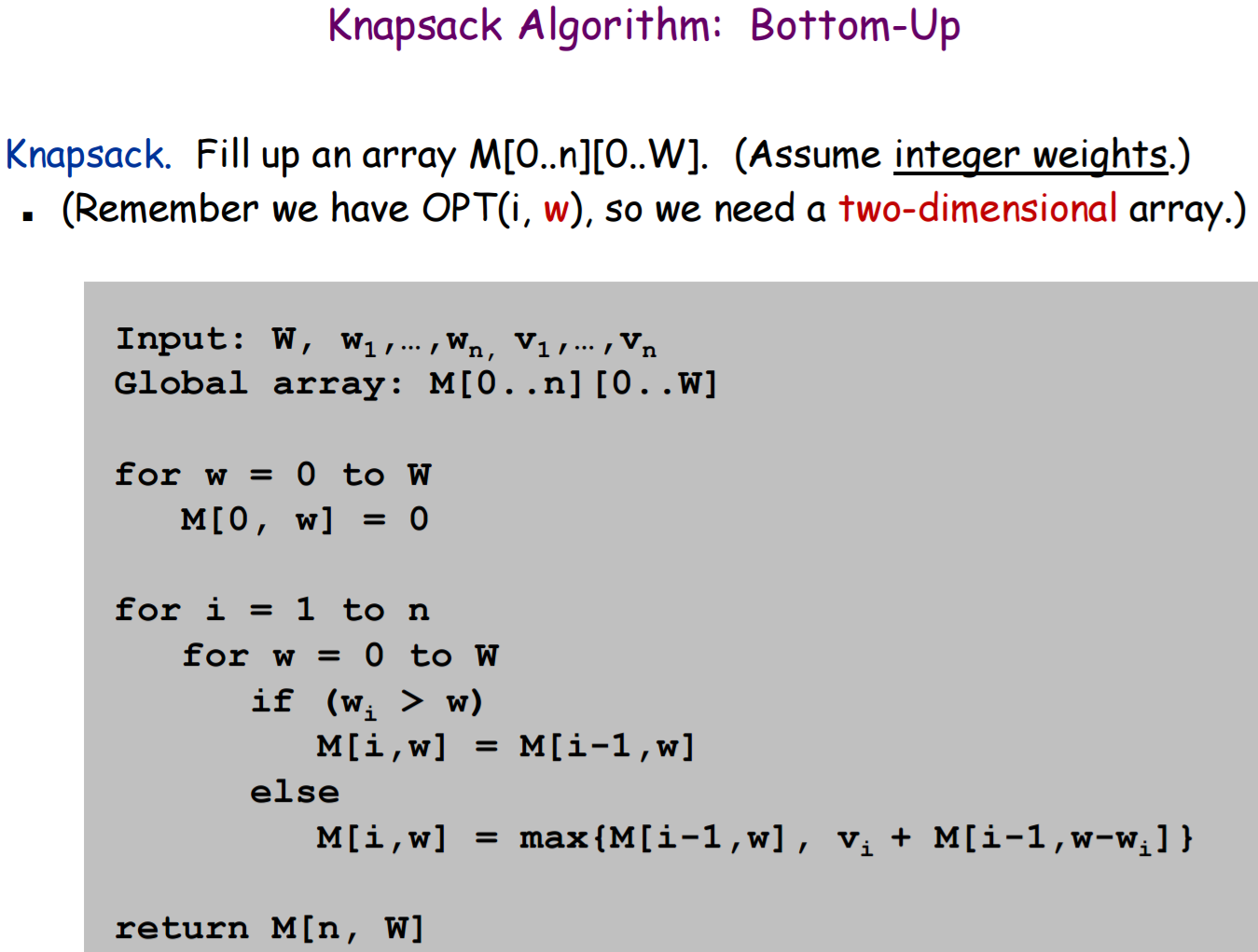Implementation of the 0-1 (binary) Knapsack Problem
Technically an NP-Hard problem, so this solution doesn't scale for large values of the Knapsack Capacity
w is the current max weight of the knapsack (goes from 0 to W, the actual max weight of the knapsack)
- If wi>W, the item it too heavy to fit in the knapsack, so we copy the value from row above:
OPT(i-1,w) - If the item CAN fit there are 2 cases
A slightly different version of the algorithm, but the point is the final loop that recovers the items from the keep array

solveKnapsack()populates the memoization table & finds the maximum weight possiblememoizationTableis filled with-1to distinguish from completed rows- Then 0th row is filled with
0 memoizationTableis printed usingprintTable()after each row is completed
findOptimalKnapsackContents()is called aftersolveKnapsack()to see what items were actually added- The ID or name of an Item is its array index
- Must be non-negative integer weights
- Run with different items by changing arrays for
values,weights&numberOfItems
There is no error checking between those 3 fields, so hard-code them into the constructor
verifyCorrectArrayLength()can be used to see if the array lengths matchnumberOfItems, but it's not enforced - View output with fixed-width font for columns to line up (configure your IDE or copy to new document)
- Arrays are indexed from 1 to make human readable
- Put a 0 as the 1st element of
valuesandweights memoizationTableandchosenItemsare both initialized to dimensions[numberOfItems+1][knapsackWeightCapacity+1]to keep it indexed from 1- Pseudocode has a step to set all values in 0th row to 0. Not needed since Java initialized the entire 2D array to 0's
findWidestNumberInTable(),findWidestElementInList()andleftPad()are all helper methods used byprintTable()printTable()is pretty fancy & prints padding spaces to the left of numbers so the columns line up. It looks nicer, but doesn't have to be that complicatedsolveKnapsack()populates memoization table & addstrueto the corresponding cell inchosenItemsmatrix when an item is addedfindOptimalKnapsackContents()works backwards from the bottom right corner of thechosenItemsmatrix- A
trueinchosenItemsmeans that an item was added to get that max value when calculatingmemoizationTable,falsemeans it just copied the value from the row above - Start with
currentCapacity=knapsackWeightCapacity igoes fromnumberOfItemsdown to 1- If a value is
true, we included that item in the knapsack so output the item @ rowi - Since we included an Item, subtract its weight from
currentCapacity(currentCapacity -= weights[i] -= weights[i])
This will move thecurrentCapacityleft some number of columns - Continue until it reaches the 1st row
- Done
- A



